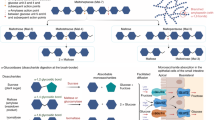Summary
Detectability of abnormally high serum and urine amylases was investigated on patients with pancreatic diseases using amylase assays with substrates of different digestive rates to pancreatic amylase. Ratios of amylase activities determined by a chromogenic assay using a Remazolbrilliant Blue R starch (RBB assay) to those by Caraway’s assay using a Lintner soluble starch (R/C ratio) were calculated on duodenal and salivary amylases obtained from 16 subjects undergoing a pancreozymin-secretin test. The R/C ratio of the duodenal amylase (M ±SD = 0.56 ±0.12) was significantly higher (p<0.01 by F test) than that of the salivary amylase (M ±SD = 0.36 ±0.10). Detectability of above-normal values of serum and urine amylases were compared with two assays in 77 pancreatic patients. The value for serum and urine amylases determined by the RBB and Caraway’s assays exceeded the upper limit of normal in 37 and 58% by the RBB assay and 24 and 26% by Caraway’s assay, respectively. Degrees of abnormality (ratio of the observed to the upper normal value) in serum and urine amylases were also significantly higher (p<0.05 for serum and p<0.01 upper for urine) by the RBB assay than by Caraway’s assay. The RBB assay was more sensitive than Caraway’s assay in detecting elevation of pancreatic amylase in serum and urine.
Similar content being viewed by others
References
Nørby, S.: Electrophoretic non-identity of human salivary and pancreatic amylases. Exp. Cell Res. 36: 663–666, 1964.
Aw, S.E. and Hobbs, J.R.: Human isoamylases. Biochem. J. 99: 16p, 1966.
Hayakawa, T., Hall, F.F. and Hightower, N.C.: Mechanism of amylase inhibition by antibody. Gastroenterology 58: 1059, 1970.
Hall, F.F., Ratliff, C.R., Hayakawa, T., et al.: Substrate differentiation of human pancreatic and salivary alpha-amylases. Am. J. Dig. Dis. 15: 1031–1038, 1970.
Hayakawa, T., Toda, Y., Noda, A., et al.: Substrate differentiation of human pancreatic and salivary amylases and its clinical application. Jap. J. Gastroenterology 70: 485–490, 1973.
Meites, S. and Rogols, S.: Serum amylases, isoenzymes, and pancreatitis. 1. Effect of substrate variation. Clin. Chem. 14: 1176–1184, 1968.
Caraway, W.T.: A stable starch substrate for the determination of amylase in serum and other body fluids. Am. J. Clin. Path. 32: 97–99, 1959.
Rinderknecht, H., Wilding, P. and Haverback, B.J.: A new method for the determination of α-amylase. Experientia 23: 805–806, 1967.
Hall, F.F., Culp, T.W., Hayakawa, T., et al.: An improved amylase assay using a new starch derivative. Am. J. Clin. Path. 53: 627–634, 1970.
Author information
Authors and Affiliations
Rights and permissions
About this article
Cite this article
Hayakawa, T., Toda, Y., Nakazawa, S. et al. Comparison of detectability of elevated amylase of serum and urine in pancreatic diseases by two amylase assay methods using starch substrates of different digestive rates to pancreatic amylase. Gastroenterol Jpn 10, 283–289 (1975). https://doi.org/10.1007/BF02776358
Received:
Accepted:
Issue Date:
DOI: https://doi.org/10.1007/BF02776358




